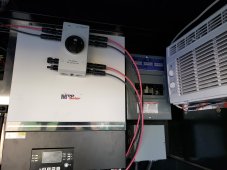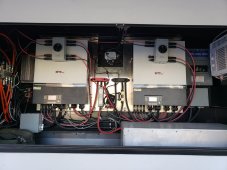Hedges
I See Electromagnetic Fields!
- Joined
- Mar 28, 2020
- Messages
- 20,508
If it were a house, wires to panel frames or other UL listed system would be required.
If a metal skinned RV, you may already have some electrical connection. If not, they're isolated and you wouldn't come in contact unless on the roof.
Most people don't do anything about it on an RV. Older systems were "12V" so about 25 Voc.
Will started out demonstrating things that worked for van/RV, later showed household wiring using non-NEC approved techniques which some people jumped on.
Your unique situation is higher voltage remote array, which might bias trailer with DC in event of a fault. Maybe AC in your case, we're not sure.
If a metal skinned RV, you may already have some electrical connection. If not, they're isolated and you wouldn't come in contact unless on the roof.
Most people don't do anything about it on an RV. Older systems were "12V" so about 25 Voc.
Will started out demonstrating things that worked for van/RV, later showed household wiring using non-NEC approved techniques which some people jumped on.
Your unique situation is higher voltage remote array, which might bias trailer with DC in event of a fault. Maybe AC in your case, we're not sure.




